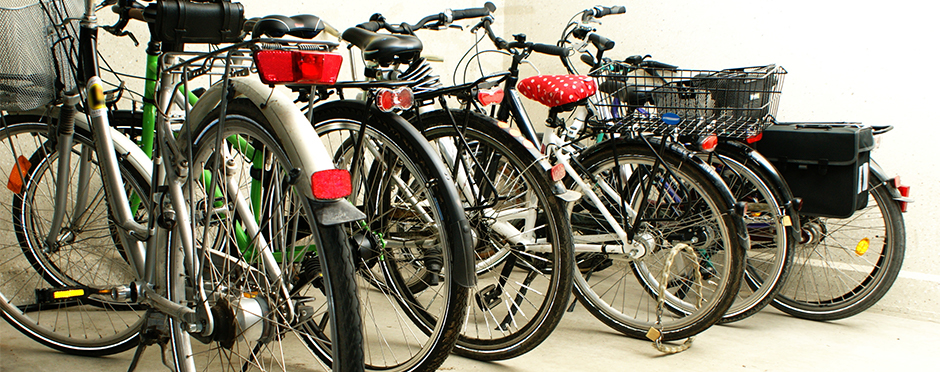
Off-Season Exercises for Cyclists
Leave a CommentDid you put a lot of miles on your bike this summer? Ready to head inside for the year now that the weather is changing? Outdoor cycling in the winter in the Midwest can be difficult – even unsafe. Luckily, there are many ways to keep up your fitness (and sanity!) until next spring.
This off-season is the perfect time to work on cross-training. Off season training for cyclists should include two important components: injury prevention and performance.
Injury prevention: Cycling is performed solely in the sagittal plane. This means all motions are performed in a forward and back motion (think running, sit ups, or elbow curls). Strength training in other planes will help with muscle balance and overall injury prevention. Here are a few exercises that can help:
- Clam shells- Lying on your side, bend your knees and lift your top knee toward the ceiling. Ensure that you are not rolling your hips back. This exercise works your gluteus medius muscle. Add resistance band to increase the difficulty of this exercise (seen in images below).
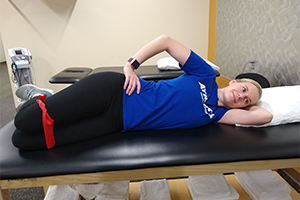
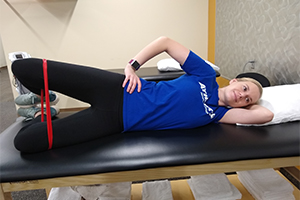
- Side Lunge- Start standing in a semi squatted position with your hands at your side or holding a weight. Step out and lunge to the side, your knee should track right over your toes. Add this exercise to work your lateral hip muscles and stability in addition to your stronger thigh muscles.
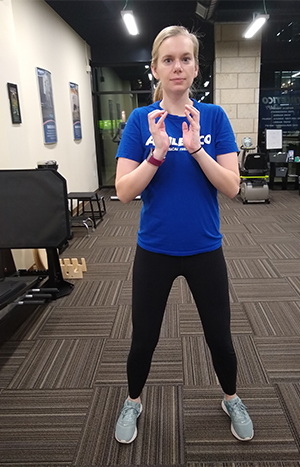
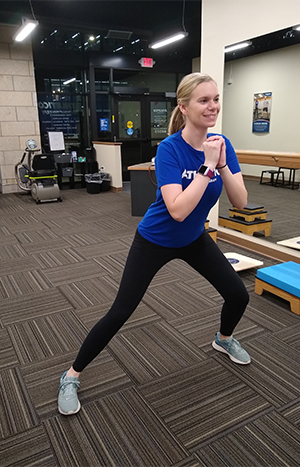
- Russian Twists– Sitting in an inclined position, gently twist side to side in a controlled manner with a medicine ball or other weight you may have handy. This is a great core exercise that will help you stabilize on your bike. You can lift your feet off of the ground for an added challenge.
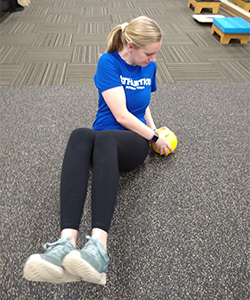
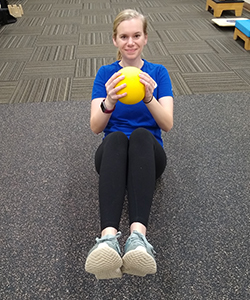
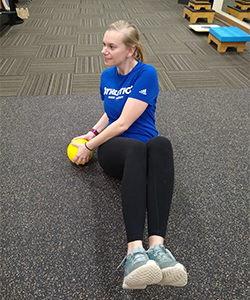
Performance: While you are cycling, muscles are being used throughout your whole body. The muscles used for increased power and speed are leg muscles, including gluteal muscles, hamstrings, quadriceps and calf muscles. Strengthening these muscle groups in the off season will improve performance in the future. Here are a few exercises to consider:
- Squats– Squats are a great way to challenge your powerful leg muscles that you are using to pedal your bike, including gluts, hamstrings, and quadriceps. Start with your feet shoulder width apart, stick your bottom back like you are sitting in a chair, and bend your knees. To progress squatting, add increased weight, perform single leg, or perform squat jumps for more power and speed on your bicycle.
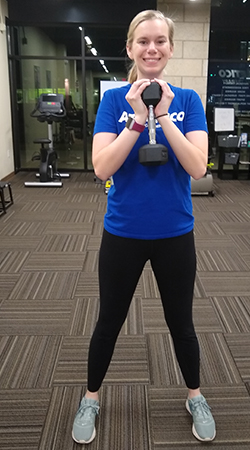
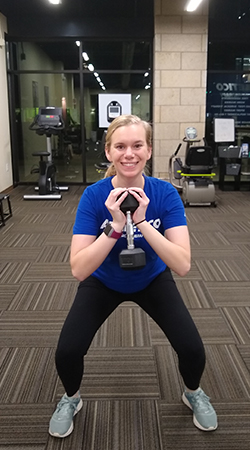
- Step Ups– To perform step ups, place one foot on a box or step and push through, lifting your other leg to a table top position and hold for one or two seconds. Then return to the ground slowly. When cycling, each of your legs are working independently to propel you forward. A step up is a great exercise to perform to work the same muscles mentioned above with squatting, but performed one leg at time.
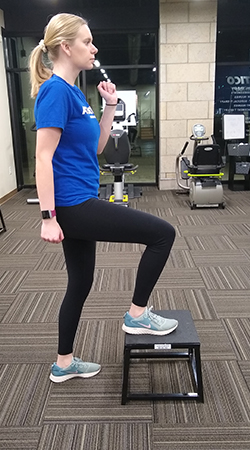
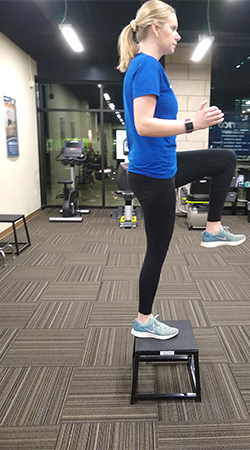
- Heel Raises– Heel raises are simple to perform and strengthening these calf muscles can give you the extra push you need when cycling. Perform standing and raise up on to your toes, hold for one second and return to the ground slowly. Add a weight or unstable surface like a foam pad for an extra challenge.
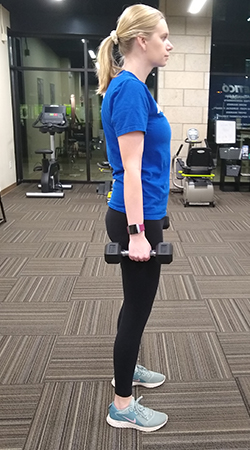
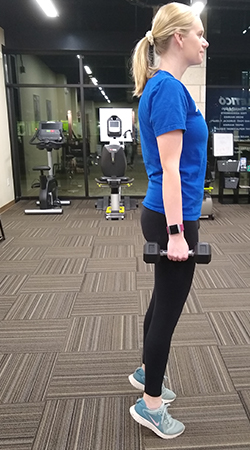
Getting Ready for Spring
Try adding these exercises to your exercise routine 2-3 days per week. To keep up cardiovascular endurance over the winter, consider stationary biking, treadmill jogging or swimming. Before you know it, spring will be here and your body will be ready for long bike rides down your favorite paths.
Contact your local Athletico clinic if you experience any difficulty while training this off season to schedule a free assessment or bike fitting! Free assessments are available in-clinic and virtually through our Telehealth platform.
The Athletico blog is an educational resource written by Athletico employees. Athletico bloggers are licensed professionals who abide by the code of ethics outlined by their respective professional associations. The content published in blog posts represents the opinion of the individual author based on their expertise and experience. The content provided in this blog is for informational purposes only, does not constitute medical advice and should not be relied on for making personal health decisions.
References:
1. Hewett, TE, Bates, NA. Preventive biomechanics. Am J Sports Med. 2017;45(11):2654–2664.
2. Rønnestad, B. R. and Mujika, I. (2014), Strength training and endurance performance. Scand J Med Sci Sports, 24: 603-612. doi:10.1111/sms.12104
3. Ericson M O, Bratt A, Nisell R, Arborelius U P, Ekholm J. Power output and work in different muscle groups during ergometer cycling. Eur J Appl Physiol. 1986; 55 229-235
